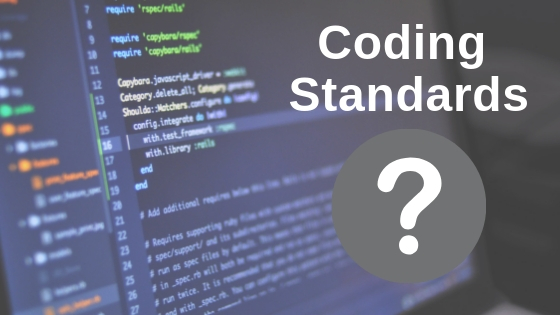
Coding, the soul of every software defines the overall performance of a software application. There are many software engineers who code for various platforms and applications by using a programming language. Since years, programming has been evolving itself to meet up to the customer requirements and changing needs.
But, what has slowly changed the programming era is the advancement and compliance with the ‘Coding Standards’. Yes, the coding standards have a great importance in creating a well framed and clean coding system. This certainly ensures better code understanding along a fine logic implementation and of course determines better software product quality.
Let’s understand this in detail and take a walk through to basics of it by first knowing the 5 coding conventions and then reading through the coding standards.
5 Basic Coding Conventions
Coding conventions are the basic rules of using a programming language. These coding rules cover all the details from naming conventions to declaration, commenting, indentation, statement rules and other architectural semantics. These conventions are framed by the organisations(not enforced by compilers) and aim at keeping the code easy to read and understand at any point of time. Here are a few of these:
- Comment Conventions: Comments in any programming language are very important to keep the code understandable. The comment syntax varies for all languages and keeps the code manageable anytime.
- Indent Style Conventions: Indent style in a programming language is the code structure. Most of the programming languages have a dedicated structure(as a cascade) that makes nesting and conditions distinguishable through the structureThe following example shows how loops and conditions are placed. Here, while loop is a tab space inside the main and similarly the ifelse is a tab space inside while loop.
int main(int ar, char *arg[])
{
…
while (x == y) {
something_a();
something_b();
if (an_error)
do_this();
else
continue_usual();
}
final();
…
} - Line Length Conventions: Many coding languages allow a specific number of characters per line. Recently, the programming languages are working onto keeping it more flexible. Already, HTML has put a word wrap feature that allows more number of characters per line.
- Naming Conventions: Naming conventions are a set of rules for declaring variables and constants. This includes the variable/constant name, type, identifiers and functions. This is very important as it:
a) Keeps code understandable
b) Saves debugging time
c) Gives a professional appearance
d) Avoids ambiguity
e) Saves time in searching any variable or constantAn example stating the difference between a code following coding convention and another code is a given below.
x = (a*b*c)/100; //without naming convention simple_interest = (principal*rate*time)/100; //with naming convention
You can clearly differentiate the importance of naming conventions now!
-
Programming Style Conventions: Every programming language has its own set of rules which makes it developer friendly. The better a developer can understand the coding conventions including the programming style, more is the code readable. The programming style conventions include – code structure(indentation), space and tabs, font, dependencies and brittleness(placing data in tables a well aligned format).
The Coding Standards
Coding standards are no rules of writing the code, instead these are the globally expected formats of code. A code that follows coding conventions will for sure comply with the coding standards.
It’s important to match the coding standards by following the following practices:
-
-
-
-
- Clearly define the varied data and its uses before writing the code.
- Code while keeping the coding conventions in place.
- Understand code integrity
- Code ethically
- Update the code according to latest updates and conventions at regular time intervals.
-
-
-
While you follow these, you save a lot of time, effort and resources. It’s always advisable to keep the code clean and integrate security measures to ensure robustness. Here are a few benefits of doing so:
-
-
-
-
- Makes code integration cleaner and easier
- Helps in team integration
- Saves a lot of time during maintenance
- Eases problem solving
- Minimizes the need to communicate for even simpler things
- Enhances performance and throughput
- Reduces overhead on money and resources
-
-
-
The Inference:
Finally we conclude that the coding conventions are an utmost important aspect. A good programmer, be an application developer, website developer, back end developer or a game developer, is well versed with all these conventions and standards and keeps the code clean. A well done coding is what keeps the code strong and maintainable. Also, this is a very crucial element in game development to keep a game updated and alive for years.







